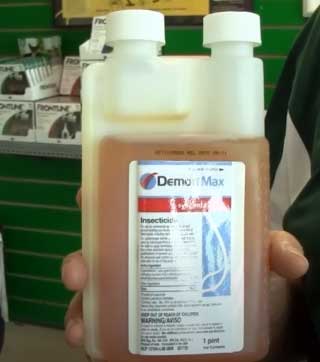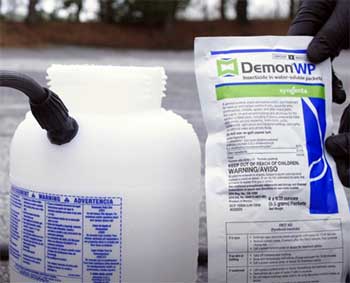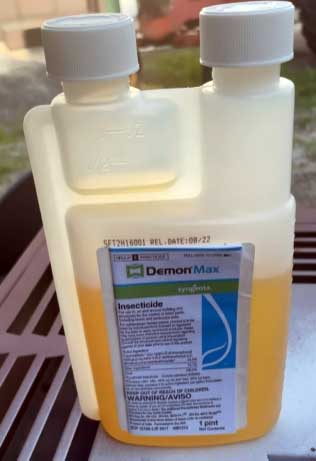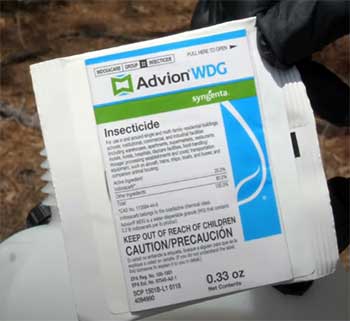Let me take you back to last summer when I found myself in a full-on battle with a relentless army of ants marching through my kitchen. I’d tried everything—store-bought sprays, homemade concoctions, even pleading with them to leave (yes, I was that desperate). Nothing worked.
That’s when I stumbled across Demon Max and Demon WP insecticides, two heavy hitters in the pest control world that promised to end my woes. Naturally, I got curious: what’s the difference between these two?
Which one would actually save my sanity? So, I rolled up my sleeves, did some research, and put both to the test. This article is my firsthand account of comparing Demon Max and Demon WP—breaking down their pros, cons, key features, and real-world performance.
My goal?
To help you figure out which one’s right for your pest problems, whether it’s ants, termites, or that creepy spider that’s been eyeing you from the corner. Stick with me as I unpack everything I’ve learned, complete with a handy comparison table, a detailed analysis, and some FAQs to clear up any lingering questions. Let’s get started!
A Brief Comparison Table
| Feature | Demon Max | Demon WP |
| Form | Liquid concentrate | Wettable powder (soluble packets) |
| Active Ingredient | 25.3% Cypermethrin | 40% Cypermethrin |
| Mixing Ratio | 0.5–1 fl. oz. per gallon | 1–2 packets per gallon |
| Coverage | 3–12 gallons from 1 pint | 2–4 gallons per envelope |
| Application Method | Spray after mixing with water | Spray after dissolving in water |
| Residual Effect | Up to 90 days | Up to 90 days |
| Target Pests | Termites, ants, roaches, spiders | Ants, roaches, spiders, wasps |
| Packaging | Pint-size bottle | Foil envelope (4 packets) |
| Visibility After Drying | Minimal residue | White powdery residue |
| Best For | Termite control, broad use | General pest control |
This table gives you the quick rundown, but trust me, there’s a lot more to unpack. Let’s explore what these differences mean in real life.
My Experience With Demon Max: The Liquid Warrior
I’ll kick things off with Demon Max because it’s the one I tried first. It comes as a liquid concentrate in a pint-sized bottle, and right off the bat, I appreciated how straightforward it was to use.
You mix it with water—about 0.5 to 1 fluid ounce per gallon, depending on how bad your pest situation is—and then load it into a sprayer. I grabbed my trusty hand pump sprayer, mixed up a batch, and went to town on the ant trails snaking across my countertops.
- Pros of Demon Max

One thing I noticed immediately was how versatile this stuff is.
It’s marketed as a multi-use insecticide, and it lives up to that claim.
The active ingredient, cypermethrin, makes up 25.3% of the mix, and it’s a synthetic pyrethroid that messes with an insect’s nervous system—paralyzing them until they kick the bucket.
I saw results fast. Within a day, those ants were history, and I didn’t see them again for weeks.
The residual effect is another big win; it keeps working for up to 90 days, which meant I didn’t have to reapply constantly.
What really sold me on Demon Max, though, was its knack for termite control. I live in an older house, and termites are a constant worry. This liquid is designed for pre- and post-construction termite treatments, so I used it around my foundation as a preventive barrier.
Knowing it could handle wood-destroying pests gave me peace of mind. Plus, it dries with almost no visible residue, which was a relief since I didn’t want my kitchen looking like a crime scene dusted for fingerprints.
It’s also pretty efficient. That one pint stretched to make 3 to 12 gallons of spray, depending on how much I diluted it. For a small infestation, I got a lot of bang for my buck. And since it’s odorless, I didn’t have to air out my house for hours afterward—a huge plus when you’ve got pets or kids running around.
- Cons of Demon Max
But it wasn’t all smooth sailing. Mixing Demon Max takes a bit of precision. You’ve got to measure it out carefully, and if you’re not used to handling liquid concentrates, it can feel a little fiddly. I spilled a bit the first time, which wasn’t a disaster, but it made me wish for something simpler.
Also, while it’s great for termites and general pests, it’s not as broad-spectrum as I’d hoped. It tackles over 30 pest species—ants, roaches, spiders, even carpenter bees—but if you’re dealing with something niche like wasps or mosquitoes, it might not be the ultimate weapon.
Another downside?
It’s not a one-and-done solution for heavy infestations. I had to reapply after a couple of weeks when I noticed a few straggler ants creeping back. The label says you can retreat every 30 to 60 days, but I’d hoped for a longer gap between applications.
And while it’s safe once dry, you’ve got to keep pets and kids away during spraying and drying, which took a couple of hours. That’s not a dealbreaker, but it’s something to plan around.
Switching Gears To Demon WP: The Powder Powerhouse
After my Demon Max experiment, I decided to give Demon WP a shot. This one’s a wettable powder that comes in a foil envelope with four water-soluble packets.
The idea is simple: drop a packet (or two for a bad infestation) into a gallon of water, let it dissolve, and spray away. I was intrigued by the higher cypermethrin concentration—40% compared to Demon Max’s 25.3%—and figured it might pack an even bigger punch.
- Pros of Demon WP

I’ll admit, I was skeptical about the powder format at first, but it won me over quick.
The packets are pre-measured, so there’s no guesswork or messy measuring spoons involved.
I just tossed one into my sprayer, added water, shook it up, and watched it dissolve in minutes.
It felt foolproof, which I appreciated as someone who’s not exactly a pest control pro.
The effectiveness?
Oh, it delivered. I used it outside around my garage where spiders had set up camp, and the next day, I found a graveyard of eight-legged intruders. That 40% cypermethrin concentration isn’t messing around—it hits hard and keeps working for up to 90 days, just like Demon Max.
It’s a broad-spectrum killer, too, wiping out ants, roaches, spiders, crickets, even wasps. I sprayed it along my windowsills and doorframes, and it created an invisible (well, almost invisible) barrier that pests didn’t dare cross.
Another perk is how far it goes. One envelope makes 2 to 4 gallons of spray, and each packet covers about 1,000 square feet. For my small yard and indoor trouble spots, that was plenty. It’s also odorless, which kept my house from smelling like a chemical factory.
And since it’s safe for crack-and-crevice treatments indoors, I used it in tight spots where pests like to hide—like behind my fridge—and it worked like a charm.
- Cons of Demon WP
Now, here’s where Demon WP tripped me up: the residue. Unlike Demon Max, which dries clean, this powder leaves a white film when it dries. I sprayed it on my dark porch railing, and it looked like I’d dusted it with powdered sugar.
Not a great look, and it took some sweeping to clean up. The label warns against using it on dark surfaces, and I learned that lesson the hard way. If you’re treating visible areas, this could be a hassle.
Mixing it is easy, but you’ve got to keep shaking the sprayer to prevent settling, which got old fast during a long application. And while the packets are convenient, they’re fragile—get them wet accidentally, and they’ll dissolve before you’re ready. I almost lost one when my hands were damp from rinsing the sprayer.
It’s also not as termite-focused as Demon Max. Sure, it’ll kill termites if they cross its path, but it’s not designed for deep wood treatments or foundation barriers. For my termite worries, that made it less versatile.
And like Demon Max, it’s not an instant fix for massive infestations—you might need multiple rounds, especially for stubborn pests like German roaches, which seem to laugh at most sprays these days.
Breaking It Down: How They Stack Up in Real Life?
So, after testing both, what’s the verdict? Let’s look at how they performed in my hands-on showdown.

- Application Ease: Demon Max requires a bit more effort upfront. Measuring out the liquid and mixing it felt like a mini science project, and I had to be careful not to overdo it. Demon WP, on the other hand, was a breeze—just drop in a packet and go. For someone like me who values simplicity, WP edged out slightly here. But if you’re comfortable with liquids and want flexibility in dilution, Max might suit you better.
- Effectiveness and Speed: Both hit pests hard thanks to cypermethrin, but the higher concentration in Demon WP (40%) seemed to knock out spiders and ants a tad faster—think hours instead of a full day. Demon Max held its own, though, especially on termites and roaches. I’d call it a tie unless you’re targeting something specific like termites (Max wins) or wasps (WP shines).
- Residual Power: They’re neck-and-neck with up to 90 days of protection. I noticed Demon Max’s barrier around my foundation lasted through a few rainstorms without breaking a sweat. Demon WP held strong too, but the residue washed away faster outdoors. Indoors, both kept pests at bay for weeks, though WP’s visible film was a reminder of its presence.
- Versatility: Demon Max takes the crown for versatility. Its termite-fighting chops and ability to treat over 30 pest species make it a jack-of-all-trades. Demon WP is no slouch, excelling against a wide range of crawling and flying pests, but it’s less specialized for wood-destroyers. If your pest problems are diverse, Max might be your MVP.
- Aesthetics and Cleanup: Here’s where they diverge. Demon Max dries nearly invisible, which I loved for indoor use. Demon WP’s white residue was a pain on dark surfaces, and I had to sweep or wipe it away in high-traffic areas. If you care about looks, Max is the cleaner option.
- Cost and Value: Price-wise, they’re in the same ballpark. My pint of Demon Max cost about $30 and made up to 12 gallons, while a $25 envelope of Demon WP gave me 4 gallons. Per gallon, Max is cheaper, but WP’s ease of use felt worth the extra few bucks. It depends on how much ground you need to cover.
What The Features Really Mean?
Stepping back, I started thinking about what makes these products tick. Cypermethrin is the star player in both, and its synthetic pyrethroid magic is why they’re so effective. It doesn’t kill on contact like a zapper—it paralyzes pests over hours or days, which means you’ll see some twitching corpses before the job’s done.
That slow burn also explains the long residual effect; it lingers on surfaces, waiting to ambush anything that crawls by.
Demon Max’s liquid form gives it an edge for penetrating cracks and soaking into soil—key for termite barriers. The 25.3% concentration is lower, but it’s balanced for broader applications without overwhelming you with potency.

Demon WP’s 40% punch, meanwhile, feels like overkill for small jobs but a godsend for heavy infestations.
The powder-to-liquid process makes it cling to surfaces differently, which might explain why it left a residue while Max didn’t.
From a safety angle, both are EPA-approved and pet-safe once dry, but you’ve got to follow the rules—gloves, no kids or animals around during application, and good ventilation.
I also noticed neither is a silver bullet for German roaches, which need baits and repeat treatments. That’s less about the products and more about those pests being tiny survivalists.
When To Choose Demon Max Vs. Demon WP?
Here’s my practical advice based on what I’ve seen. Go with Demon Max if you’re worried about termites or want a clean, versatile option for indoor and outdoor use. It’s your go-to for foundation treatments or subtle pest control in living spaces. Pick Demon WP if you’re battling a broad pest invasion—spiders, wasps, ants—and don’t mind a little cleanup. Its simplicity and potency make it ideal for quick, aggressive action.
For me, Demon Max won out because of my termite paranoia and dislike for visible residue. But if I were just blasting spiders in the garage, I’d grab WP without hesitation. Your choice hinges on your pests, your space, and how much effort you’re willing to put in.
Frequently Asked Questions (FAQ)
No, they’re not. Both use cypermethrin, but Max is a liquid concentrate (25.3%) for termites and general pests, while WP is a powder (40%) for broad-spectrum control. Different forms, different strengths.
Yes, it’s a beast against ants, spiders, roaches, and wasps. I saw dead pests within a day, and it lasts up to 90 days. Just watch the residue.
It’s a multi-use champ—termites, ants, roaches, spiders, even carpenter bees. I used it for termite barriers and indoor pests with great results.
Every 30 to 60 days for maintenance, but I reapplied after two weeks for a stubborn ant comeback. Check your pest levels and adjust.
Conclusion: Your Pest-Free Future Awaits
Looking back on my pest-fighting saga, I can say both Demon Max and Demon WP are serious contenders. I’ve walked you through my trials, triumphs, and the occasional mess, and now it’s your turn to pick a side.
If termites haunt your dreams or you want a discreet fix, Demon Max is your ally. If you’re ready to wage war on a pest army and don’t mind a little powder, Demon WP’s got your back. Either way, you’re armed with the know-how to reclaim your space.
So, grab your sprayer, choose your weapon, and let me know how it goes—I’d love to hear your battle stories! Here’s to a pest-free life, courtesy of some cypermethrin-powered muscle.
